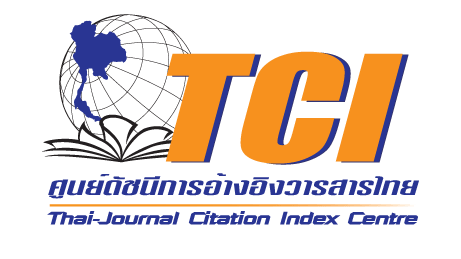แนวคิดการอิมโพรไวส์โดยกำหนดโน้ตเป้าหมาย
คำสำคัญ:
การอิมโพรไวส์, โน้ตเป้าหมาย, ดนตรีแจ๊สบทคัดย่อ
บทความวิชาการนี้มีวัตถุประสงค์เพื่อนำเสนอวิธีอิมโพรไวส์โดยกำหนดโน้ตเป้าหมายในลักษณะต่าง ๆ ได้แก่ การใช้โน้ตในคอร์ด การใช้โน้ตจากบันไดเสียงหรือโมดที่สัมพันธ์กับคอร์ด และการใช้โน้ตโครมาติกเพื่อเข้าหาโน้ตเป้าหมาย รวมถึงการเอ็นโคลเชอร์ พร้อมยกตัวอย่างการอิมโพรไวส์โดยกำหนดโน้ตเป้าหมายของนักแซกโซโฟนแจ๊สจำนวน 4 คน ซึ่งล้วนเป็นผู้มีบทบาทสำคัญในการสร้างสรรค์ดนตรีแจ๊สรูปแบบต่าง ๆ ได้แก่ โคลแมน ฮอว์คินส์ นักเทเนอร์แซกโซโฟนที่มีบทบาทสร้างสรรค์ดนตรีแจ๊สช่วงสวิงบิกแบนด์ ชาร์ลี พาร์คเกอร์ นักอัลโตแซกโซโฟนผู้คิดค้นแนวทางการอิมโพรไวส์แบบบีบ็อพ พอล เดสมอนด์ นักอัลโตแซกโซโฟนผู้มีบทบาทในการสร้างสรรค์ดนตรีคูลแจ๊สและเวสต์โคสต์แจ๊ส และจอห์น โคลเทรน นักเทเนอร์แซกโซโฟนที่มีบทบาทในการสร้างสรรค์ดนตรีฮาร์ดบ็อพ โมดัลแจ๊ส และฟรีแจ๊ส การบรรเลงของนักแซกโซโฟนทั้ง 4 คน แสดงให้เห็นแนวทางอิมโพรไวส์โดยกำหนดโน้ตเป้าหมายที่แตกต่างกัน บทความวิชาการนี้จึงเป็นประโยชน์ต่อนักดนตรีที่ต้องการศึกษาแนวทางอิมโพรไวส์ในระดับกลางถึงระดับสูง
เอกสารอ้างอิง
Berliner, Paul F. Thinking in Jazz: The Infinite Art of Improvisation. Chicago: University of Chicago, 1994.
Coker, Jerry. Improvising Jazz. New York: Simon & Schuster, 1987.
Gridley, Mark C. Jazz Styles: History and Analysis. Upper Saddle River, NJ: Prentice Hall, 2009.
Laohverapanich, Teerus. Jazz Styles and Analysis. Bangkok: Phatcharada Press, 2021. (in Thai)
Laohverapanich, Teerus. The Art of Jazz Improvisation. Bangkok: Phatcharada Press, 2020. (in Thai)
Ligon, Bert. Comprehensive Technique for Jazz Musicians. Milwaukee, WI: Hal Leonard, 1999.
Terefenko, Dariusz. Jazz Theory. 2nd ed. New York: Routledge, 2018.

ดาวน์โหลด
เผยแพร่แล้ว
รูปแบบการอ้างอิง
ฉบับ
ประเภทบทความ
สัญญาอนุญาต
ลิขสิทธิ์ (c) 2024 วิทยาลัยดุริยางคศิลป์

อนุญาตภายใต้เงื่อนไข Creative Commons Attribution-NonCommercial-NoDerivatives 4.0 International License.
ลิขสิทธิ์ของบทความเป็นของเจ้าของบทความ บทความที่ได้รับการตีพิมพ์ถือเป็นทัศนะของผู้เขียน
กองบรรณาธิการไม่จำเป็นต้องเห็นด้วยและไม่รับผิดชอบต่อบทความนั้น





